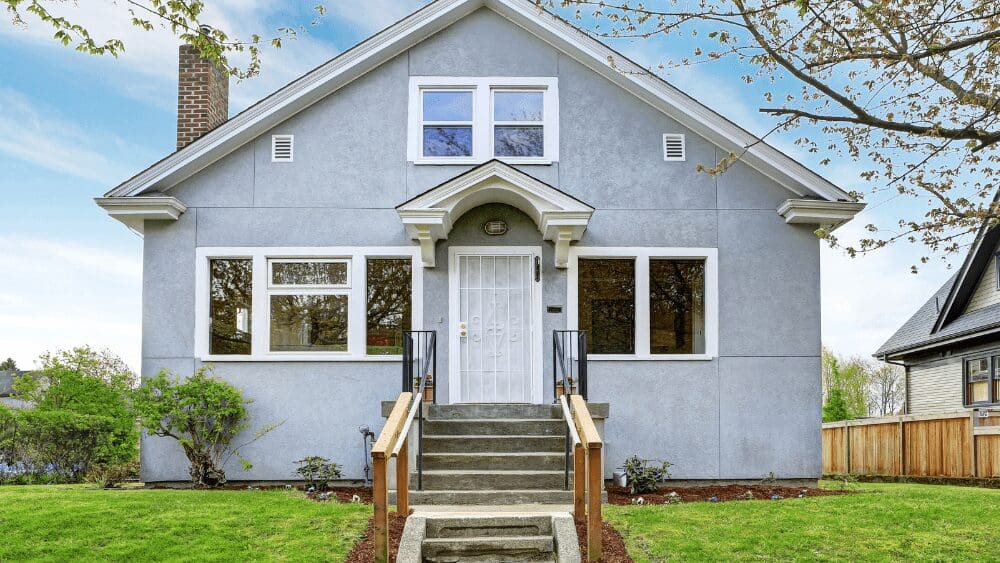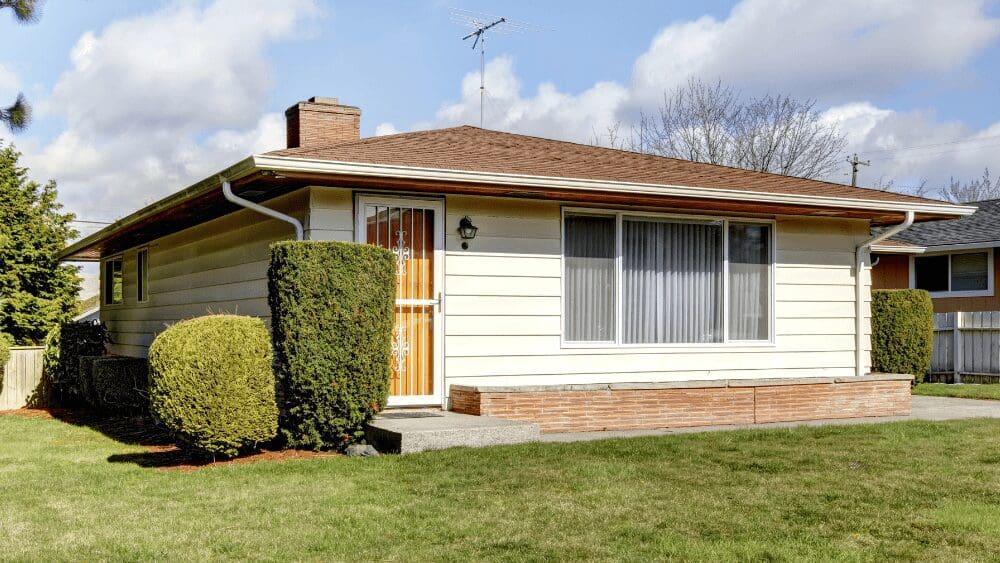
When the time comes to move, some tenacious homeowners in Utah are eager to take over the reins of their home sale and figure out how to sell a house by owner. With millions of homes sold each year, a modest portion of sellers — about 7% in 2021 and 10% in 2022 — choose to list “For Sale By Owner” (or FSBO — pronounced fizz-bow). Of those, 50% already knew the buyer of the home, according to data from the National Association of Realtors (NAR). In this guide to selling FSBO in Utah, we’ll cover what can be the most difficult aspects of selling by owner in the Beehive State, including the steps that might be harder than you think. We’ll also provide a comprehensive overview of the full process to prep, market, and close on your home without the assistance of a real estate agent. Note: Once you’ve seen what’s required, you can roll up your sleeves and get started with your FSBO sale. Or — in the event you’d prefer to work with a real estate agent — HomeLight would be happy to introduce you to highly-rated professionals in your Utah market who can help you command top dollar and provide a low-stress selling experience. Disclaimer: This blog post is intended for educational purposes only. HomeLight recommends that you look into the real estate regulations for your area and consult a trusted advisor. FSBO is a method of selling your home without the involvement of a listing agent. In a FSBO scenario, the seller assumes the responsibilities that would normally fall to their agent, such as pricing the home, marketing it to potential buyers, arranging showings, and negotiating the deal. FSBO sellers generally put a yard sign up with their name and phone number on it, and they may also advertise online on a FSBO website, pay a flat fee service to advertise on the MLS, and list their home in some online classifieds and social media sites. In an agent-assisted sale, the seller typically pays a commission amounting to around 6% of the sale price, which is then most often split 50/50 with the buyer’s agent. That 6% is deducted from the seller’s proceeds at closing. By selling FSBO, a seller can eliminate the cost of the listing agent’s commission (so around 3%), though they may still need to offer a buyer’s agent commission. Buyers’ agents will expect compensation for the work they do to bring a buyer to a sale, such as arranging showings and helping to tee up and qualify the buyer. Plus, when a seller isn’t working with an agent, the buyer’s agent may end up carrying more of the weight to get the deal to the finish line. Next: Consult our guide on who pays closing costs when selling a house by owner for more details. Finally, a FSBO sale does not mean that a seller won’t need any professional assistance. In Utah, sellers are not required to hire a real estate attorney, but FSBO sales typically warrant legal and professional oversight of some kind to avoid an abundance of legal risk. Most people who sell by owner will need to hire an attorney to review and prepare key documents and make sure paperwork is filled out properly, such as the seller’s disclosures. We’ll address what disclosures are required when selling a house in Utah later in this post. The top three reasons people cite for selling FSBO include: did not want to pay a commission or fee (44%); sold to a relative, friend, or neighbor (29%); or that the buyers contacted the seller directly (16%), according to NAR data. To get a firsthand perspective on selling homes in Utah, we spoke with Stephanie Grable from The Stern Team in Salt Lake City, who is a single-family home expert in The Salt Lake Valley. Her team works with over 67% more homes than average agents in their market. Grable says Utah FSBO sellers she encounters “Think they will save money on real estate commissions by selling their home themselves. However, they usually end up making less money on their home sale if they sell FSBO than if they enlisted the help of a top agent.” 2022 data from NAR shows that “FSBO homes sold at a median of $225,000, significantly lower than the median of agent-assisted homes at $345,000.” This NAR data contrasts the median prices among all FSBO homes (for which we have limited data) against all agent-assisted homes, regardless of distinctions like square footage. However, an earlier independent study that does adjust for square footage also showed a significant price difference: FSBO homes sold for an average of 5.5% less than agent-marketed sales. As you can see, FSBO is a mixed bag. So, before we share our selling tips, let’s lay out some pros and cons to help you decide if this is the route for you. In spite of the cons, we’ll help you navigate the challenges of FSBO if you’re committed to selling your Utah house without agent assistance. For some, selling a home FSBO is a challenge worth accepting, and success can be measured in more ways than one. Next, let’s review the FSBO process step by step. Whether you’re selling with an agent or FSBO, at a minimum, you’ll want to get your Utah home into respectable shape before any showings to increase your chances of receiving a fair price. Here are a few standard tasks to add to the list. These efforts will go a long way toward impressing buyers looking for a home in Utah Grable says that “Buyers want to be able to picture themselves in the home and not still think of it as someone else’s home, so that’s why it’s important to remove religious symbols, political decor, family photos, and other personal memorabilia.” Data from HomeLight’s 2022 Top Agents Insight Report shows that, on average, “Buyers will pay 7% more for a house with great curb appeal versus a home with a neglected exterior.” Some important curb appeal upgrades can include: “Your curb appeal sets your first impression, so make it a good one! If you have overgrown weeds and peeling paint, the buyer will think the house isn’t taken care of, and they will start to look for other flaws once they get inside,” says Grable. You’ve arrived at a critical moment in your FSBO process: setting a listing price. You don’t want to leave money on the table, yet you want to encourage activity on your listing. Before listing a home, an agent usually conducts a comparative market analysis (CMA). This is a highly-detailed study of “comps” — similar homes nearby that have sold recently, are pending, on the market, or were previously listed but taken off the market. Some may have even been pulled off the market without a sale. “It’s essential to set the listing price right the first time. You don’t want to go too low and leave money on the table, but you don’t want to list too high and miss out on potential buyers because it’s listed out of their price range,” recommends Grable. Without an agent, you’ll miss out on the complexity of a full CMA and the know-how to interpret it. However, with a little time and money, you can set a competitive price yourself. It’s time to roll up your sleeves and research. As a starting point, look at several online estimators for your home’s value. HomeLight’s Home Value Estimator aggregates publicly available data such as tax records and assessments, your home’s last sale price, and recent sales records for other properties in the same neighborhood. We also add a new layer of information to our estimates using a short questionnaire. Tell us a few details about your Utah home, such as: Using these insights, we’ll provide you with a preliminary estimate of home value in under two minutes. Whether you use Zillow, Chase, Realtor, or Redfin to get a home value estimate, think of any online home price tool as a first step (not your only source of truth) — and recognize that the data used may be limited. When you’re ready to find comps, you can choose from sites like Zillow, Trulia, Redfin, or Realtor. You’ll want to filter your searches to the area very near your house (within blocks if possible) and with similar characteristics. If you’re not finding any comps, expand your search map. You’ll also want to filter results by details like: Beyond the above criteria, the more houses you find with floor plans and an age similar to yours, the better. As an example, let’s take a look at how to filter your search for comps on Zillow. If you want to further reduce guesswork, top agents recommend paying an appraiser to provide a professional opinion of value for your home. An appraiser will combine recent property data, research of the surrounding market, and information collected from a walkthrough of your home to determine an appraised value. For a single-family home, an appraisal will likely cost $500 to $600 — well worth it to avoid possibly over- or underpricing your house by thousands. Compare your home’s features against the nearby comps you collected. Hopefully, the houses you studied give an indication of an appropriate price range for your home. From there, you can make dollar adjustments based on characteristics that add value (patios, curb appeal, an extra bedroom) versus detracting from it (a busy street, deferred maintenance, less square footage). Consider the differences and similarities of comps with the appraised value of your home to choose a price that will encourage activity (too high, and it may seem out of reach to many buyers), but will also maximize your profit. “Utah is such a diverse state, and buyers move here from all over the world — and they want different things. However, most buyers really look for a home that can help them escape the hustle and bustle of big-city life. Large yards, mountain views, and warm light-filled interiors are all popular features that can increase your home’s value,” according to Grable. Listing photos are powerful, either pulling in buyers for showings or keeping them away. To give your listing an edge, consider hiring an experienced real estate photographer. While they may charge as much as $140 to $180 an hour, “High-quality photographs are important for selling a home because they’re giving a potential buyer the first peek of the house, and they’re deciding whether or not they should even visit the house based on the photos,” Grable says. But if you do go the DIY route, make sure to: Review our guide on how to take quality real estate photos for further guidance. Along with stellar photos, you’ll want to craft an informative and compelling listing. Leverage both the listing description (a paragraph or two highlighting key features) and the property details to show potential buyers all about your home and what makes it desirable. Draw in potential buyers with a powerful listing description that tells a story about your Utah house, including details like: Lastly, and this is crucial: specify in your description the commission a buyer’s agent will receive from the proceeds. Most agents don’t want to show their clients properties from which they’d receive a paltry commission. When you list in the MLS, you must include a buyer’s commission. It can be as little as $1 but recognize that may limit your buyer pool as buyers’ agents typically expect to be compensated for their efforts. If you choose not to list in the MLS so you can forego the buyer commission, you’ll seriously limit the exposure your home will get. Aside from writing the description, you may be prompted to enter information like: Many real estate agents and potential buyers really do read this “fine print” on your listing — so include accurate details, and plenty of them. It’s finally time to post your Utah home online. While you can create FSBO listings for free on popular search sites, you’d have to painstakingly post site by site, and your listing wouldn’t reach the majority of buyers and agents. To give your home the most exposure, pay to have your home put on your local MLS (multiple listing service) — a platform agents use to share properties with one another as well as major real estate sites. Posting there will feed your listing to buyers’ agent databases and to common sites buyers use. Only licensed real estate agents and brokers who are MLS members can post to the MLS. However, you have two options to gain access: paying an agent to post for you or using a FSBO platform online. A local agent may be willing to list your house on the MLS for a flat fee, without any other involvement in your real estate transaction. If you decide to go this route, ask whether the fee includes updating your listing if necessary. You can use various paid websites to list your Utah house online as “for sale by owner.” These sites offer packages ranging from about $100 to $400 for just a listing, or a larger flat fee of $3,000 to $5,000 that includes any number of additional professional marketing services. Some of these companies display their rates on their websites, but others won’t quote a fee until you input your address or select an area of the country. A few examples include: It’s important to note that most of these companies serve FSBO sellers nationwide, which can cause challenges if the assisting representatives don’t understand the local market trends in your Utah neighborhood. Whatever you choose, read the fine print carefully: some sites may have hidden fees or even take a percentage off your sale — a detour you’d rather avoid on the FSBO route. If you’re determined to save money by foregoing the MLS, creating a free FSBO listing on Zillow might be your top option. You can post a video and unlimited photos, and get fairly wide exposure via Zillow and the Zillow-owned Trulia. Now it’s time to spread the word about your Utah home. Experienced agents like Grable know that posting a home on the MLS is just the beginning of the marketing phase. A successful home sale requires a deliberate and targeted marketing plan to reach the right buyers and attract the best offers. “You need to market your Utah home to not only local buyers but buyers moving from other states, countries, and buyers who want to purchase a vacation home in Utah. A top real estate agent can market to all of these people for you,” says Grable. Here are some of the steps you can take to market your home: Consider getting a custom yard sign rather than purchasing a generic one you write on with a Sharpie. You can order a custom sign on a site like Vistaprint with your contact information, plus a stand, for as little as $25 plus shipping. Note that some MLS providers may have rules about whether you can post a FSBO yard sign while your home is on the MLS. Share your home across social media — and ask your friends to share, too. Try these strategies for a successful open house event: Find more expert tips for how to hold an open house at this link. If your marketing is successful, your next step will be to show the home to prospective buyers. Welcome to the busiest phase of the home sale process. According to Grable, a major reason some FSBO sellers switch to an agent is that they underestimated the time, energy, and expertise needed to manage this crucial step. To manage the logistics of showings: If you’d rather not be present for every showing, consider using a lockbox with a code to let buyers’ agents enter the house. This is standard industry practice among agents. To ensure you’re working with someone legitimate, use Google or sites like arello.com to check their real estate license number. With unrepresented buyers, plan to be on the property for the showing. During a showing, we recommend you: Grable always recommends that a seller not be present for showings if at all possible. Even if you just take a walk and let the buyers look around the house and imagine themselves living there. You’ve got your first offer — congratulations! Before signing anything, Grable recommends thoroughly reading through the offer and noting not just the offer price, but if there will be a mortgage, and when the closing date will be. Remember to take your time and be prudent when responding to offers. Here are key considerations when considering an offer on your Utah home: In Utah, a residential property seller is generally required to disclose the condition of the home to the buyer. This form is called a Utah Seller’s Property Condition Disclosure. It needs to be filled out, signed by the seller, and given to the buyer prior to closing. Whether required by law or not, some sellers may prefer to provide the disclosures before an offer has even been presented so that a prospective buyer is more informed beforehand and less likely to withdraw from a deal later on. In an agent-assisted sale, your listing agent would likely provide you with the required disclosure form(s). However, as a FSBO seller, you can find the form online. What will you be asked? In Utah, you can expect to disclose any significant defects or issues you’re aware of concerning: If in doubt about a problem with the home’s condition, most top real estate agents would recommend you disclose it. If you know of an issue and choose not to disclose a major problem, and that defect is later discovered, you could be held liable for damage or subsequent costs. Grable calls the Seller’s Property Condition Disclosure “the do not get sued document.” She recommends disclosing everything that you know about the house so the buyer can’t hold you liable for something later on. Time to button up that deal. While some states require that FSBO sellers hire a real estate lawyer to help close their sale, Utah does not. However, it’s still a good idea to invest in the services of an experienced attorney as you close one of the biggest and most complex deals of your life. By doing so, you’ll minimize your legal and financial risk, plus simplify the process for yourself. Real estate attorney fees can vary depending on location and how much help you want or need. In Utah, they generally range from $190 to $354 per hour — well worth it for professional guidance in closing one of life’s largest legal transactions. On your FSBO journey, watch out for these major pitfalls: “One of the most common errors FSBO sellers make when selling a home in Utah is pricing the home incorrectly, which can delay or even kill a deal,” says Grable. “Utah is a non-disclosure state — none of the home sale data is disclosed — so FSBO sellers often price their home too low or too high without using the help of a top agent.” Another common mistake that FSBO sellers make, according to Grable, is not marketing their home to enough potential buyers so it sits stale on the market. If you decide you don’t want the hassle or pressure of FSBO, you’ve got other solid options. Ultimately, the services and price gains you can get with an experienced real estate agent may put more money in your pocket than FSBO. A proven agent is also better equipped to help you achieve your selling and moving timelines. Grable had a FSBO seller who made the mistake of leaving too much money on the table during the inspection negotiations. Since then, this homeowner has referred all her friends and family to Grable so they can have the help of a real estate professional when selling their homes. Working with a top-value agent has so many benefits, including marketing the property to a larger pool of clients. Grable says that her clients’ homes receive far more exposure than what a typical FSBO seller can achieve. And her team can help the seller add value before the home is even listed. More exposure and a better-prepared home translate to more proceeds for the seller and a faster sale. Interested in such expertise? HomeLight can connect you to top-performing agents in your Utah market. Our free tool analyzes over 27 million transactions and thousands of reviews to determine which agent is best for you based on your needs. It takes only two minutes to receive your matches. If you’d like to skip the sale prep altogether — plus avoid paying agent commissions — you can opt to sell your home “as-is” to an all-cash buyer instead. For a low-stress experience, consider requesting a cash offer from HomeLight’s Simple Sale platform. Tell us a few details about your home, and in as few as 48 hours, we’ll send a no-obligation all-cash offer your way. If you decide to accept the offer, Simple Sale sellers have the ability to close in as little as 10 days. Without leaving the Simple Sale platform, you’ll also be able to compare your cash offer to an estimation of what your home would sell for on the open market so you can make an informed decision. Unless you already have a buyer lined up, selling a house by owner in Utah requires a significant investment of time and effort. You’ll need to pull your own comps, capture excellent pictures, create a listing, market the house online, field inquiries, host showings, negotiate, and close the deal. And that’s after preparing the house itself. You also have to consider that FSBO listings tend to sell for less than agent-assisted sales. An experienced agent who knows the area can make recommendations for targeted upgrades to help you maximize your sale price and get a premium offer. This can help to offset or, in some cases, more than make up for the cost of commission — while saving you time and headaches. If you choose to go FSBO, you should have a good idea now of what to expect from the process. Otherwise, our internal transaction data at HomeLight shows that the top 5% of real estate agents sell homes for as much as 10% more than average, and we’d be happy to introduce you to some of the best agents in your Utah market. Writer Hayley Abernathy contributed to this story.How does selling by owner (FSBO) work in Utah?
Why sell a house by owner in Utah?
Pros of selling a house by owner
Cons of selling a house by owner
Steps to sell a house by owner
1. Prepare your house for sale
Indoors
Outdoors
2. Do the homework necessary to set a competitive price
Conduct your own “CMA Lite”
Start with an online home value estimate
Narrowly filter your search for comps
Use a site like Zillow to collect your data
Invest in an appraisal
Make sense of the research
3. Photograph your home
4. Create a detailed, compelling listing
Tell a story with your description
Don’t skimp on the property details
5. List your home online
Pay an agent to list your home on the MLS
Use a FSBO platform with an MLS option
Not willing to pay for the MLS?
6. Market your home
Place a nice FSBO sign by the road
Share on social media
Hold an open house
7. Manage showings
Should you be present for showings?
8. Evaluate offers, negotiate a deal, and make disclosures
Property condition disclosure
9. Close the sale — with professional help
FSBO mistakes to avoid in Utah
Alternatives to selling by owner in Utah
Enlist the help of a top-rated real estate agent
Request a cash offer to buy your Utah home
Ready to sell your Utah home?



